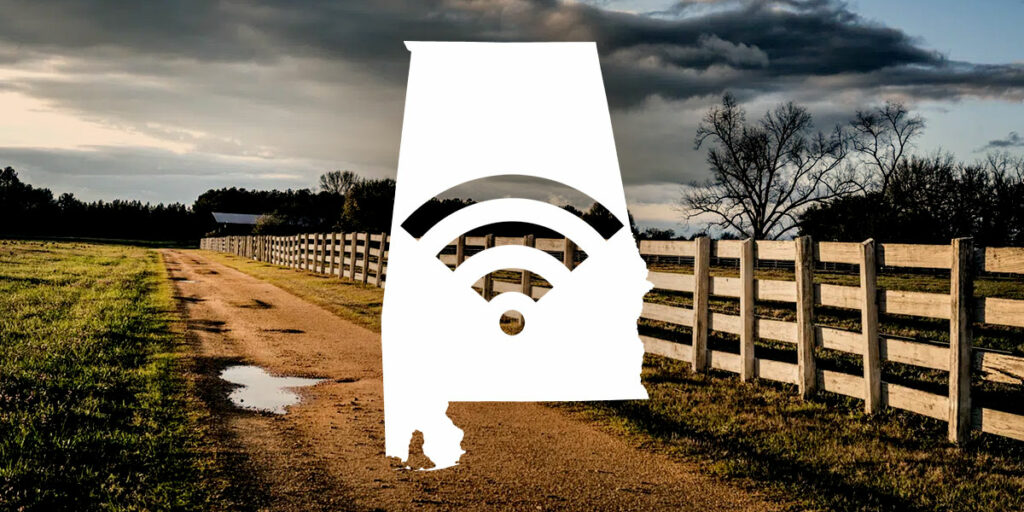The Alabama Department of Economic and Community Affairs (ADECA) this week released the long-awaited Alabama Broadband Map outlining a comprehensive layout of the state’s high-speed internet needs.
ADECA also released the Alabama Connectivity Plan detailing the state’s recommended roadmap to expand broadband services to underserved areas.
The Alabama Digital Expansion Authority (ADEA) last month held a public meeting during which leaders discussed strategies to deliver high-speed internet services across the state.
During the meeting, the authority gave a glimpse into the efforts that were undertaken to compile the data necessary to form the Alabama Broadband Map. The state coordinated with 57 active broadband internet service providers (ISPs) in Alabama to gather the information needed.
The map will be utilized to determine eligibility for state and federal broadband investment to bring services to unserved areas and facilitate ISPs expansion planning efforts. It also provides an in-depth view of internet speeds currently available in each census block of the state.
Gov. Kay Ivey praised ADECA’s work to expedite broadband planning efforts and spoke to the importance of modernizing the state’s technology infrastructure.
“Broadband is vital infrastructure for Alabama, and this new map gives us the clearest and most accurate picture to date of broadband availability throughout the state,” stated Ivey. “Expanding access to high-speed internet will help bring more jobs, improve educational opportunities and bolster our economy. I commend ADECA, the internet service providers and all others involved in this mammoth effort to create this valuable new tool that will enhance our efforts to provide broadband services to every corner of Alabama.”
ADECA noted that prior to the map’s creation, Alabama was reliant upon federal data that only requires ISPs to deliver broadband services to one address in a census block to claim the entire area. The map comes at a time when the Federal Communications Commission (FCC) acknowledges deficiencies in its own data. It was recently announced that the FCC’s map updates will be further delayed, proving Alabama’s map to be even more timely.
ADECA stated in a release that by evaluating address-level data, the state will be able to hone in on census blocks that are only partially served with broadband.
ADECA director Kenneth Boswell spoke to his department’s collaborative efforts with elected leaders to meet existing broadband infrastructure needs.
“ADECA is working with Gov. Ivey, the Legislature and the Alabama Digital Expansion Authority to expand access to the broadband so that Alabamians have access to the tools they need to participate fully in the modern economy,” advised Boswell. “We are excited about the creation of this broadband map as it gives new insights to guide these efforts while also providing resources to better inform the public.”
Coordination with the state’s ISPs was critical to the map’s development, according to ADECA.
“This map would not have been possible without the participation of internet service providers,” added Boswell. “We thank every internet service provider who participated for their willingness to help us further this vitally important mission.”
The interactive Alabama Broadband Map can be accessed here.
The map’s functionality allows the public to research broadband availability in their specific areas. Individuals can also run a speed test and provide information regarding their current connectivity. Elected officials may access the map’s data to evaluate their constituency’s high-speed internet accessibility.
Additionally, ISPs can scrutinize the map’s data to further enhance its accuracy.
ADEA chairman and Senate Majority Leader Clay Scofield (R-Guntersville), who has spearheaded the state’s efforts to expand broadband services, celebrated the map’s release and indicated that it would prove invaluable in the state’s planning efforts.
“ADECA’s Alabama Broadband Map is a significant milestone in the operation to expand broadband services across the state, ensuring Alabamians are well-equipped to participate in an advanced 21st century economy,” Scofield said in a statement to Yellowhammer News. “The state legislature appropriated the funds it took to build this state-of-the-art map, and our years of hard work led us to produce one of the most innovative maps in the country.”
He added, “The invaluable data and resources obtained from this product will help guide those leading this monumental operation — from the legislature, to the governor, the Alabama Digital Expansion Authority, and many others. I look forward to continuing my work with these partners until our goal is accomplished.”
The Alabama Connectivity Plan, which will be presented to the state legislature in the upcoming regular legislative session to determine funding needs, can be viewed here.
Dylan Smith is a staff writer for Yellowhammer News. You can follow him on Twitter @DylanSmithAL













